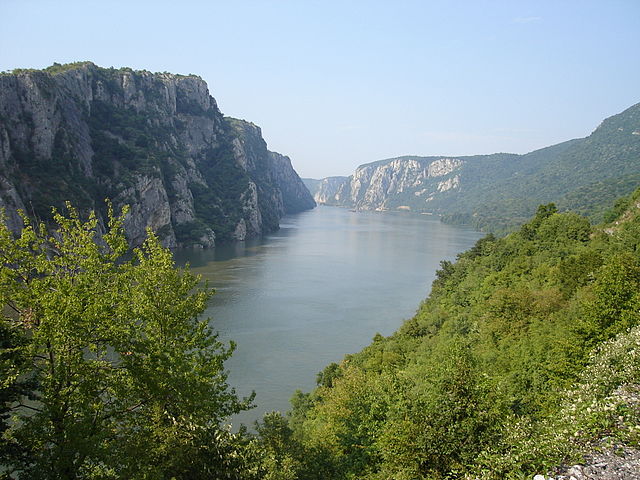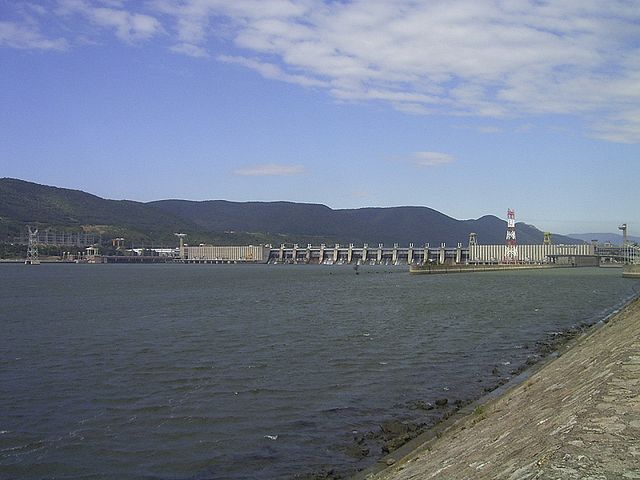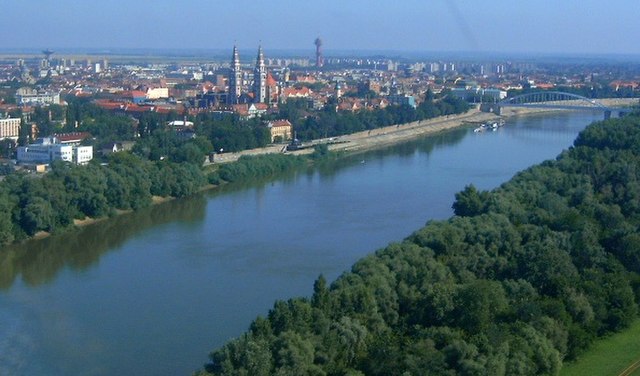The Iron Gates is a gorge on the river Danube. It forms part of the boundary between Serbia and Romania (north). In the broad sense it encompasses a route of 134 km (83 mi); in the narrow sense it only encompasses the last barrier on this route, just beyond the Romanian city of Orșova, that contains two hydroelectric dams, with two power stations, Iron Gate I Hydroelectric Power Station and Iron Gate II Hydroelectric Power Station.
The Iron Gates of the Danube
Kazan gorge at its narrowest point
The Roman plaque "Tabula Traiana", Serbia
Iron Gate I dam
The Danube is the second-longest river in Europe, after the Volga in Russia. It flows through Central and Southeastern Europe, from the Black Forest south into the Black Sea. A large and historically important river, it was once a frontier of the Roman Empire. In the 21st century, it connects ten European countries, running through their territories or marking a border. Originating in Germany, the Danube flows southeast for 2,850 km (1,770 mi), passing through or bordering Austria, Slovakia, Hungary, Croatia, Serbia, Romania, Bulgaria, Moldova, and Ukraine. Among the many cities on the river are four national capitals: Vienna, Bratislava, Budapest, and Belgrade. Its drainage basin amounts to 817,000 km² and extends into nine more countries.
The Danube in Budapest
The hydrogeographical source of the Danube at St. Martin's Chapel in Furtwangen im Schwarzwald: the Bregquelle, the source of the Danube's longest headstream, the Breg, where the Danube is symbolized by the Roman allegory for the river, Danuvius.
The symbolical source of the Danube in Donaueschingen: the source of the Donaubach (Danube Brook), which flows into the Brigach.
The Tisza is the longest tributary of the Danube.








